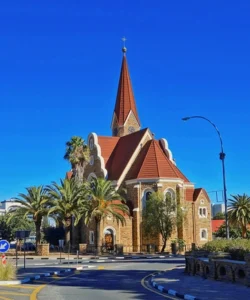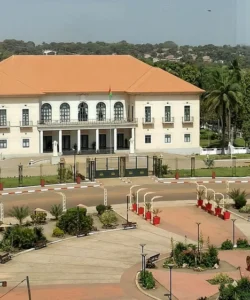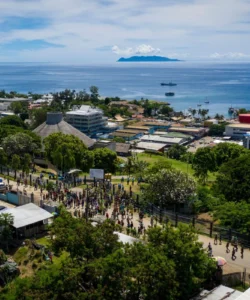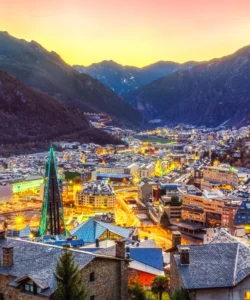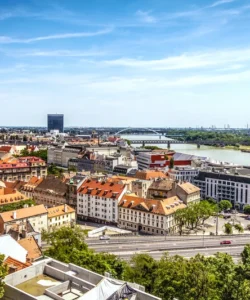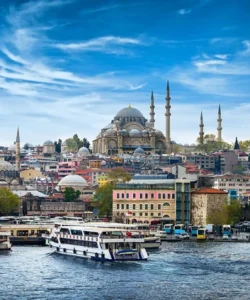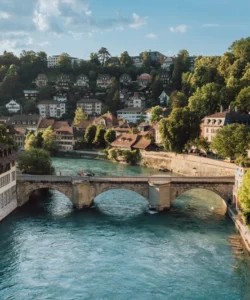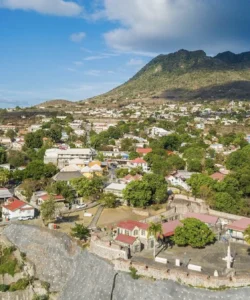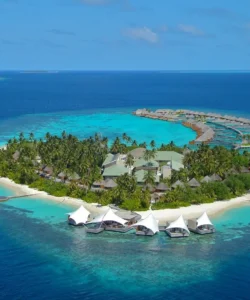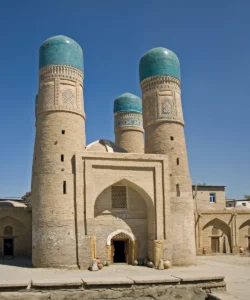Jordan, officially the Hashemite Kingdom of Jordan, is a country in West Asia. It is bordered by Syria, Iraq, Saudi Arabia, Israel, and Palestine, and it has a small coastline on the Red Sea at the Gulf of Aqaba. Jordan is a land of stunning deserts, ancient historical sites, and a strategic position in the Middle East.
![]()
Area: Approximately 89,342 square kilometers (34,495 sq mi).
Population: The estimated population for 2025 is around 11,442,114.
Language: Arabic is the official language.
Currency: Jordanian Dinar (JOD).
Religion: The predominant religion is Islam, with over 92% of Jordanians being Muslim. Approximately 8% are Christians.
Capital: Amman.
Major Cities: Besides Amman, other notable cities include Irbid, Zarqa, Ma’an, Al Jubayhah, and Sahab.
Attractions & Wonders:
Jordan is home to several iconic attractions and wonders, many of which are historically and culturally significant:
- Petra: The ancient Nabataean city carved into rose-red cliffs, a UNESCO World Heritage Site and one of the New7Wonders of the World.
- Wadi Rum Protected Area: A stunning desert landscape known for its dramatic sandstone mountains, natural arches, and ancient inscriptions.
- Dead Sea: The lowest point on Earth, famous for its hypersaline water allowing people to float effortlessly, and its mineral-rich mud.
- Amman Citadel: An ancient historical site in the heart of Amman with Roman, Byzantine, and Umayyad ruins.
- Jerash: One of the best-preserved Roman provincial towns in the world, featuring impressive ruins like the Oval Plaza, Hadrian’s Arch, and the Hippodrome.
- Ajloun Castle: A 12th-century Muslim castle built by the Ayyubids to protect iron mines and deter Crusader incursions.
- King Abdullah I Mosque: A magnificent blue-domed mosque in Amman.
- Bethany Beyond the Jordan: Believed to be the site where Jesus Christ was baptized.
- Madaba: Known for its Byzantine and Umayyad mosaics, particularly the Madaba Map, a 6th-century mosaic map of the Holy Land.
- Dana Biosphere Reserve: Jordan’s largest nature reserve, offering diverse landscapes and a variety of wildlife.
Architecture:
Jordan’s architecture reflects its long and varied history, featuring a mix of ancient Roman, Byzantine, Islamic, and traditional styles, alongside modern contemporary designs, particularly in Amman.
Roads:
Key highways connecting different parts of the country include:
- King’s Highway: A historic and scenic route that winds through historically significant towns and offers access to castles and natural reserves.
- Dead Sea Highway (Highway 65): A direct route to southern Jordan along the Dead Sea.
- Desert Highway (Highway 15): Another main route for travel to southern Jordan.
Hotels:
Jordan offers a wide range of accommodation options, from luxury hotels in Amman and Aqaba to more rustic guesthouses and eco-lodges in natural reserves. In Amman, you can find international chains like Sheraton and Radisson Blu, as well as boutique hotels and budget-friendly options.
Restaurants & Cuisine:
Jordanian cuisine is a Levantine cuisine with a strong emphasis on hospitality. Popular dishes often include lamb, beef, and chicken.
- Mansaf: The national dish of Jordan, made with lamb cooked in a sauce of fermented dried yogurt (jameed) and served with rice.
- Mezze: A selection of small dishes often served as appetizers, including classics like hummus, baba ghanoush, kibbeh, and tabbouleh.
- Zarb: A traditional Bedouin BBQ where meat and vegetables are slow-cooked in an underground oven.
- Falafel and Shawarma: Popular street food options.
- Maqluba: “Upside-down” dish with meat, fried vegetables, and rice.
- Sweet treats: Knafeh (a cheese pastry soaked in sweet syrup) is a popular dessert.
You’ll find a variety of restaurants in Jordan, from traditional Jordanian eateries to international cuisine. Amman, in particular, boasts a vibrant dining scene with options ranging from casual cafes to elegant restaurants.
Annual Travel:
Jordan’s tourism sector has seen fluctuations. In 2023, Jordan recorded 3,750,683 visitor arrivals, showing a significant recovery compared to previous years, though still below its peak of 7,061,400 visitors in 2010. The country continues to be a popular destination for its historical sites, natural wonders, and cultural experiences.


